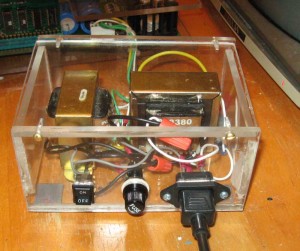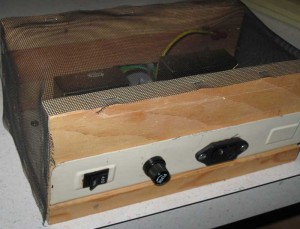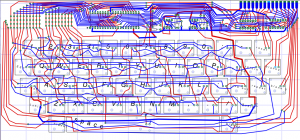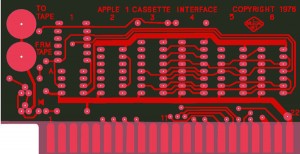Folks,
Quick update – while waiting for the panasonic cassette recorder to arrive, I’ve started work on a new project.
This is going to be a Datanetics Keyboard PCB. This was the keyboard that was most commonly used with Apple 1 computers. There were several revisions made. I’m likely to layout the rev D, since it used most of the same keycap set as early Apple IIs. However, I have access to an actual, original rev B, and may decide that I can do a more faithful replication of that version.
Note that some of the important parts for this keyboard can be very hard to find. The MM5740/AAE keyboard encoder is a very difficult IC to find. Furthermore, the ones you do find, sometimes do not work reliably. Randomly repeating characters after warm up is the symptom of this problem. It would be possible to program a micro controller to accomplish the same function and mount it on a plug in daughter card. However, I think I have enough MM5740’s to satisfy my own needs, so I’ll leave that to someone else. As far as I know, Datanetics key switches and key caps can only be sourced from early Apple II plus computers. The early Apple II/plus keyboards used the same keyswitch and the same style key caps. In fact those keyboards were made for Apple by Datanetics. There are also some metals stiffeners that will be have to be fabricated in order to complete the project.
Because of the difficulty of finding parts, my plans are to only sell bare PCBs, leaving it up to the prospective keyboard builder to find the parts for his build. In addition, I will ask for pre-payment and only order enough PCBs to fill pre-paid orders. I’ll be accepting pre-orders when I feel that the layout is ready for production. The order will be placed when I have enough pre-orders to justify making a build.




